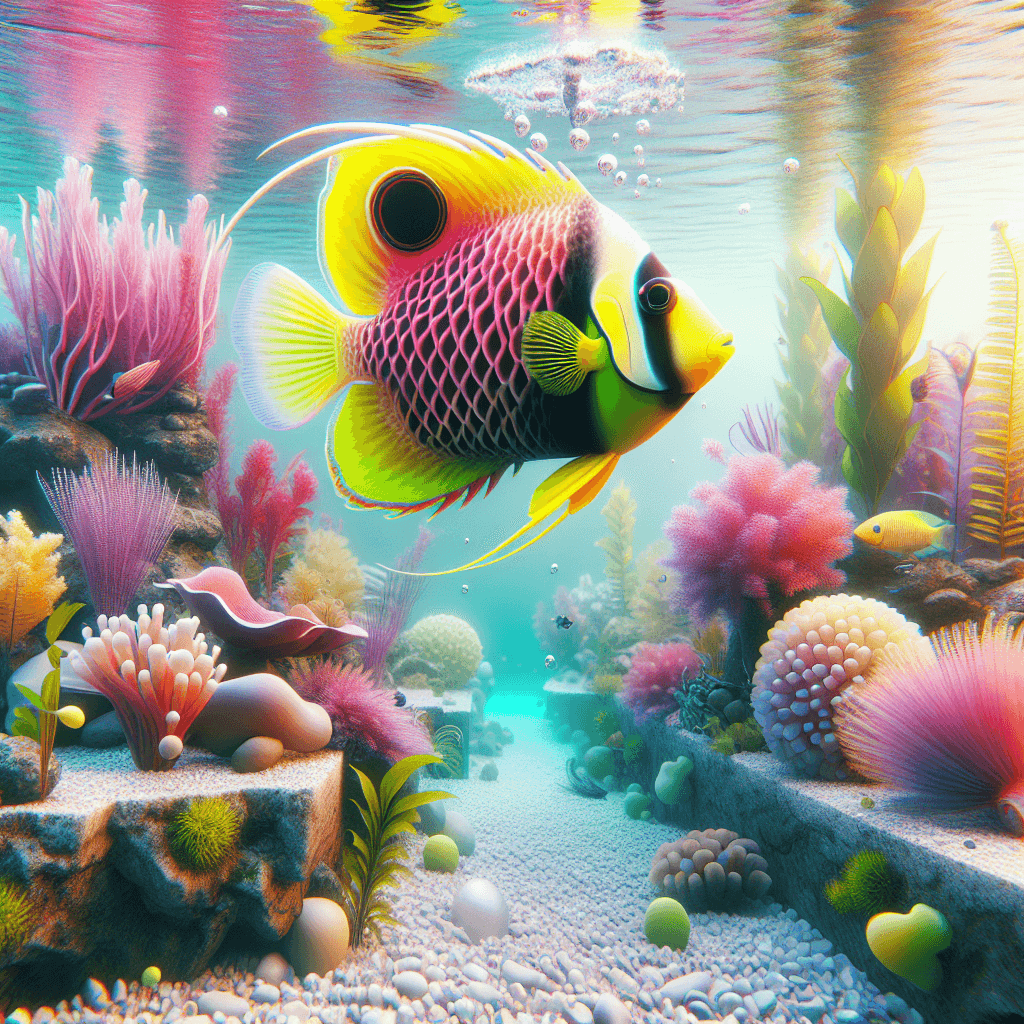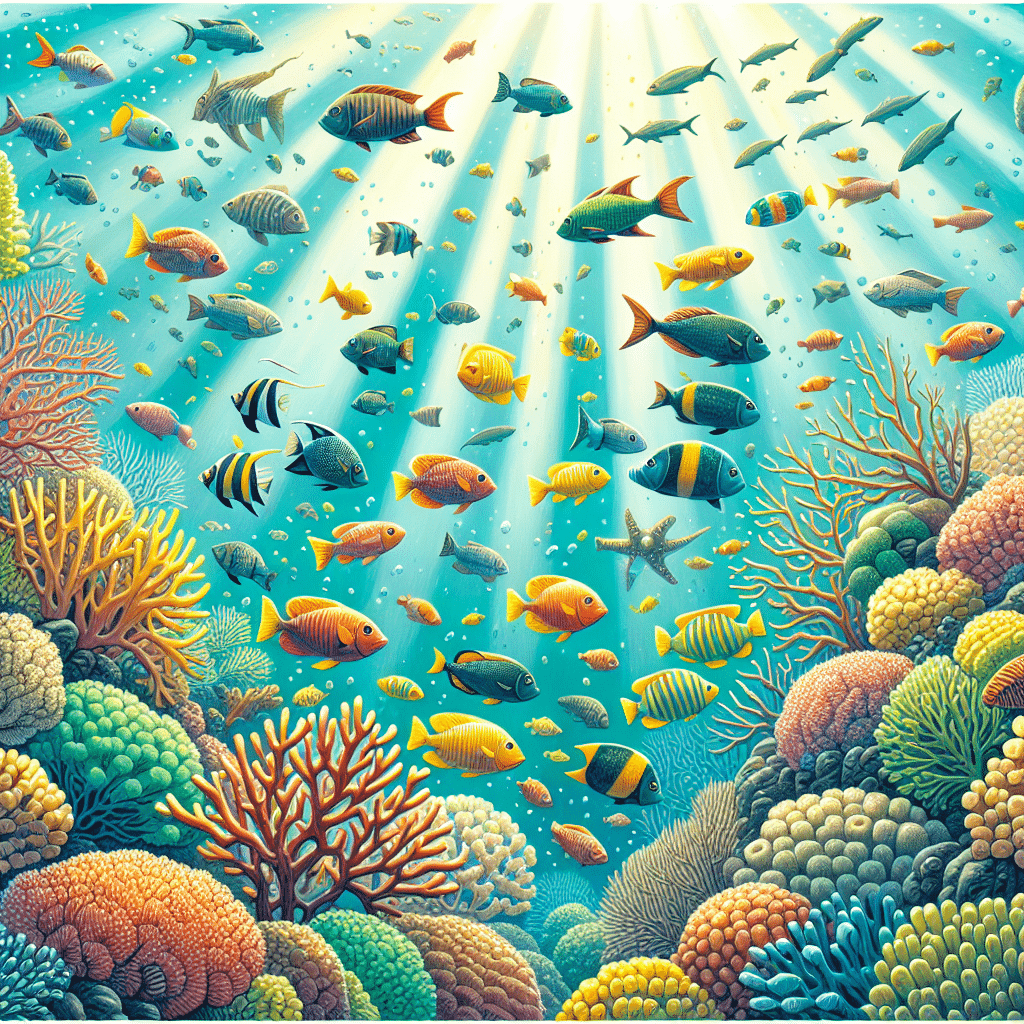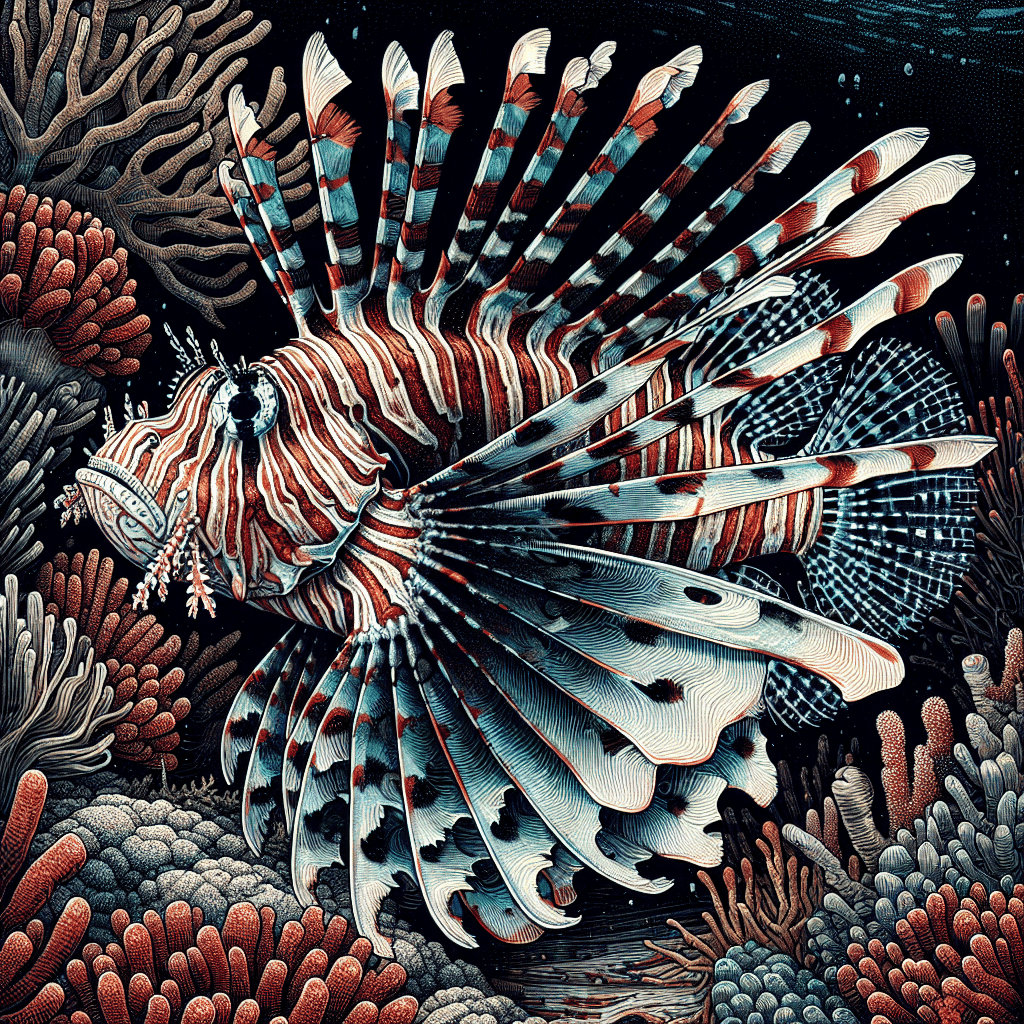The Foxface Rabbitfish
Introduction to Foxface
I find the Foxface Rabbitfish to be a fascinating addition to any reef tank. These unique fish are not only visually appealing but also serve a practical purpose in controlling algae growth. As herbivores, they primarily feed on macroalgae, making them excellent candidates for maintaining a clean aquarium environment. Their peaceful temperament allows them to coexist well with a variety of marine species, provided they’re not housed with other Foxfaces, as they can be territorial towards their own kind.
Foxface Rabbitfish are typically wild-caught, as they are not available through aquaculture. It’s important to source them from reputable suppliers that prioritize sustainable practices. This ensures ethical treatment for these marine creatures, which is something I always look for when adding new fish to my tank.
Unique Characteristics
One of the standout features of the Foxface Rabbitfish is its striking appearance. Their bodies are adorned with vibrant colors and patterns that can brighten up any aquarium. They are also equipped with venomous spines, which can deliver a painful sting if mishandled. This characteristic serves as a defense mechanism against potential predators, so caution is necessary when working around them (Georgia Aquarium).
Here’s a quick overview of some key characteristics of the Foxface Rabbitfish:
| Characteristic | Description |
|---|---|
| Diet | Herbivore; primarily feeds on macroalgae |
| Compatibility | Peaceful with non-aggressive fish |
| Venomous Spines | Yes, can deliver a painful sting |
| Origin | Wild-caught; not available through aquaculture |
| Algae Grazing Efficiency | Excellent; considered the best pest algae grazer for beginners (Absolutely Fish Naturals) |
With their unique traits and beneficial roles in a reef tank, Foxface Rabbitfish are definitely a great choice for hobbyists looking to enhance their aquatic environment while keeping algae in check. For more information on different types of marine fish, feel free to explore.
Foxface Species
Siganidae Family
The foxface fish belong to the family Siganidae. This family is quite fascinating, as it includes various species that are not only beautiful but also play important roles in their ecosystems. Foxface fish, with their unique shapes and colors, have become popular choices for reef tank hobbyists like me.
Magnificent Foxface
Among the different foxface species, the Magnificent Foxface stands out. This stunning fish can grow to about nine inches (22 cm) in length (Dallas World Aquarium). I find it particularly interesting that the Magnificent Foxface primarily feeds on algae, but it also enjoys the occasional small invertebrate. This diet makes it a great addition to a reef tank, as it helps control algae growth.
When it comes to breeding, the Magnificent Foxface has a unique spawning behavior linked to the lunar cycle. Spawning typically occurs around the time of the new moon, and external fertilization takes place in the open water. After fertilization, the eggs attach themselves to the sea floor before hatching.
In terms of habitat, the Magnificent Foxface is usually found among branching corals on sheltered reefs in the Eastern Indian Ocean. This environment provides both food and protection from predators. Good to know for anyone interested in replicating this fish’s natural habitat in their aquarium!
Fortunately, the Magnificent Foxface is listed as Least Concern on the IUCN Red List, which means it’s not currently at risk of extinction (Dallas World Aquarium). This is great news for us fish tank enthusiasts, as it ensures a steady supply of these beautiful fish for our aquariums. If you’re considering adding a foxface to your reef tank, the Magnificent Foxface is definitely one to think about!
Habitat and Behavior
Natural Environment
I find that the Foxface Rabbitfish thrives in well-maintained aquariums that mimic their natural environment. These fish are native to the reefs of the Indo-Pacific region. They prefer areas rich in algae, allowing them to graze on it throughout the day. It’s best to provide plenty of rocks and stones in the tank where they can find algae to munch on. If there isn’t enough algae available naturally, it’s essential to supplement their diet with algae-rich food like Spirulina to keep them healthy.
| Natural Habitat Characteristics | Description |
|---|---|
| Region | Indo-Pacific |
| Preferred Environment | Reef areas with ample algae |
| Tank Requirements | Rocks and stones for grazing |
Feeding Habits
Feeding my Foxface is quite interesting. These fish are herbivores and primarily feed on macroalgae, which makes them effective at controlling algae growth in aquariums. They can eat large amounts of algae relative to their size, including green hair algae and filamentous algae. However, they won’t consume every type of algae, so I always keep specific information handy in case of an algae outbreak (Reef App).
To maintain their immune system, I ensure that their primary diet consists of algae-based foods. It’s crucial to observe their eating habits and adjust their diet according to their needs. I enjoy watching them graze as they help keep the tank clean while enjoying their meals.
| Feeding Information | Details |
|---|---|
| Diet Type | Herbivore |
| Preferred Foods | Macroalgae, Spirulina |
| Algae Consumption | Effective at controlling algae growth |
This understanding of their natural environment and feeding habits is essential for providing the best care for my Foxface and ensuring they thrive in my reef tank.
Care and Maintenance
Taking care of your foxface rabbitfish requires attention to their specific needs regarding tank conditions and diet. Here’s what I’ve learned about keeping these fascinating creatures healthy and thriving in a reef tank.
Tank Requirements
Foxface are best kept in a well-maintained aquarium that allows them to graze on algae from rocks and stones. They thrive in environments where they can find a variety of algae to munch on. Here are some key tank requirements to keep in mind:
| Requirement | Details |
|---|---|
| Tank Size | Minimum of 75 gallons |
| Water Temperature | 72°F to 78°F |
| pH Level | 8.1 to 8.4 |
| Salinity | 1.020 to 1.025 Specific Gravity |
| Filtration | Strong filtration with good water movement |
If there’s insufficient algae in the tank, I make it a point to feed them more frequently, supplementing their diet with algae-rich foods like Spirulina (Reef App). This helps ensure they get the nutrients they need to stay healthy.
Diet and Feeding
Foxface are herbivores and primarily feed on macroalgae, making them valuable additions to aquariums for controlling algae growth. They can eat large amounts of algae relative to their size, including green hair algae and filamentous algae. However, they do not eat every type of algae, so it’s good to know what works best. Here’s a quick overview of their dietary preferences:
| Food Type | Description |
|---|---|
| Algae | They thrive on various algae types, especially Spirulina and other macroalgae. |
| Supplementary Foods | If algae is limited, I provide algae-based foods or pellets designed for herbivores. |
| Live Foods | Occasionally, I might offer small amounts of live foods for variety, though it’s not a staple. |
Foxface are effective algae eaters and can help combat bubble algae in the tank (Saltwaterfish.com). It’s important to ensure their primary diet is algae-based to maintain a healthy immune system. They typically show little interest in corals or other invertebrates, which minimizes the risk of causing damage to the reef environment.
By keeping an eye on their tank conditions and providing a balanced diet, I can ensure my foxface rabbitfish remain healthy and happy in their aquatic home.
Compatibility and Temperament
When considering adding a foxface to my aquarium, understanding its compatibility with other fish and its temperament is essential.
Tank Mates
The Foxface Rabbitfish is known for its peaceful nature, which makes it compatible with various marine species. I find that they coexist well with non-aggressive fish and invertebrates, which is great for a community tank. However, it’s advisable to keep only one foxface in the tank due to its potential territorial behavior towards its own species. Here’s a quick look at some suitable tank mates:
| Compatible Fish | Notes |
|---|---|
| Clownfish | Peaceful and social |
| Tang | Similar care requirements |
| Wrasse | Active and vibrant companions |
| Goby | Smaller size and peaceful temperament |
| Butterfly Fish | Non-aggressive and colorful |
| Parrotfish | Herbivores, similar dietary needs |
| Lawn Mower Blenny | Helps control algae alongside foxface |
I always ensure that the tank is large enough to accommodate these species comfortably. A minimum of 75 gallons is recommended for the foxface, depending on the size of the other fish as well (Petco).
Aggression Levels
In terms of aggression, the foxface generally maintains a calm demeanor. They do not show interest in corals or invertebrates, which minimizes the risk of any damage to other tank inhabitants (Saltwaterfish.com). This makes them a valuable addition for algae control, as they primarily feed on macroalgae.
However, I keep in mind that while they are peaceful towards other species, they can become territorial with their own kind. I avoid placing more than one foxface in the same tank to prevent any conflicts. Overall, their friendly temperament makes them a great choice for a mixed reef tank setup.
For more insights on suitable species, I recommend checking out guides on other marine fish like clownfish, tang, and blenny to find perfect companions for your foxface.
Handling and Safety
Venomous Spines
When it comes to handling the foxface rabbitfish, caution is key. These beautiful fish are not just eye-catching; they are also equipped with venomous spines that can deliver a painful sting. The venom is primarily located in their anal, dorsal, and pectoral fins, which they can inject through their sharp spikes. It’s important to note that while the venom can be painful, it is not typically fatal unless under specific circumstances.
Foxfaces are known to change color when they are scared, often becoming pale or brownish, and they tend to hide rather than confront threats. This behavior is a natural defense mechanism, reminding us that they prefer to avoid confrontation whenever possible (Reef App).
Cautionary Measures
To ensure safe handling of foxface rabbitfish, I recommend taking the following precautions:
Avoid Direct Handling: Minimize direct contact with the fish. If you need to move them, use a net rather than your hands.
Wear Protective Gear: If you must handle the fish, consider wearing gloves and long sleeves to protect your skin from accidental stings.
Maintain Tank Conditions: Keep the tank clean and well-maintained to reduce stress on the fish, which can lead them to feel threatened.
Educate Others: If you have friends or family who help with aquarium maintenance, make sure they are aware of the foxface’s venomous nature.
Observe Behavior: Always be attentive to the fish’s behavior. If the foxface appears frightened or agitated, it’s best to keep your distance.
By understanding the potential risks and taking appropriate measures, I can enjoy the beauty of the foxface while ensuring both my safety and the well-being of the fish. If you’re interested in other marine species, check out articles on marine fish such as the lionfish, clownfish, and other fascinating reef tank inhabitants.
Breeding and Reproduction
When it comes to breeding and reproduction, the foxface has some fascinating behaviors that any fish tank enthusiast would find interesting.
Spawning Behavior
The spawning of the Magnificent foxface is intriguing. It’s believed that their spawning is linked to the moon cycle, typically occurring around the new moon. During this time, they engage in external fertilization in open water. After mating, the fertilized eggs attach themselves to the sea floor, where they will eventually hatch.
This process emphasizes the importance of maintaining a natural environment in your aquarium that mimics these conditions, especially if you’re considering breeding them.
| Spawning Aspect | Details |
|---|---|
| Spawning Timing | Around the new moon |
| Fertilization Type | External |
| Egg Attachment | Sea floor |
For more insights on breeding marine species, check out our section on marine fish.
Reproduction Cycle
The reproduction cycle of the foxface is relatively straightforward but requires attention to detail. After fertilization, the eggs will hatch within a few days, depending on water temperature and conditions. The juvenile foxfaces are free-swimming and will need proper care to ensure their survival.
Foxfaces, like the One Spot Foxface, reach a size of about 8 inches and usually require a minimum aquarium size of 100 gallons. It’s essential to provide them with live rock and ample swimming space. While they can be peaceful in a reef tank, they can display aggression towards their own species, so it’s best to keep only one in the tank.
| Reproduction Cycle Aspect | Details |
|---|---|
| Egg Hatching Time | A few days post-fertilization |
| Juvenile Size | Up to 8 inches |
| Minimum Tank Size | 100 gallons |
For those interested in keeping these beautiful creatures, ensuring a suitable environment is crucial for their overall health and successful breeding. If you’re looking for compatible tank mates, consider checking out our guides on clownfish and tang species.
Conservation Status
Threats
The Foxface Rabbitfish, known scientifically as Siganus unimaculatus, faces several threats in its natural habitat. One of the primary concerns is habitat destruction due to coastal development and pollution, which can degrade the coral reefs they inhabit. Additionally, overfishing poses a significant risk as these fish are often caught for the aquarium trade. Their beautiful colors make them a popular choice among hobbyists, which can lead to population declines in the wild.
Another threat is climate change, which affects ocean temperatures and acidity. Changes in these conditions can harm the coral reefs that provide shelter and food for the Foxface. Moreover, the Foxface’s venomous nature can sometimes lead to misunderstanding, causing people to fear or harm them unnecessarily.
Conservation Efforts
Conservation efforts for the Foxface Rabbitfish primarily focus on protecting their habitats and ensuring sustainable fishing practices. Various marine reserves and protected areas have been established to safeguard the coral reefs that are vital for the survival of these fish. These protected zones help to reduce the impact of fishing and pollution, allowing ecosystems to recover.
Organizations are also working to educate aquarium hobbyists about the importance of sourcing fish responsibly. Promoting captive breeding of the Foxface Rabbitfish can help alleviate pressure on wild populations. By encouraging hobbyists to choose sustainably sourced or tank-bred fish, we can support the conservation of this species.
Here’s a quick overview of the conservation status and threats facing the Foxface Rabbitfish:
| Factor | Status/Impact |
|---|---|
| Habitat Destruction | Significant due to coastal development |
| Overfishing | Major threat from aquarium trade |
| Climate Change | Alters coral reefs, affecting food sources |
| Education and Awareness | Ongoing efforts to promote sustainable practices |
For those interested in maintaining a healthy aquarium environment, it’s essential to consider the impact of our choices on species like the Foxface Rabbitfish. By understanding their conservation status and supporting responsible practices, we can help ensure that these fascinating fish continue to thrive in our oceans. If you’re looking to learn more about other marine species, check out our articles on marine fish and other fascinating reef tank inhabitants.



